Thanks for any and all suggestions!
+3
sKiZo
Dahlberg
LeGrace
7 posters
Tube rolling for low freq spectrum
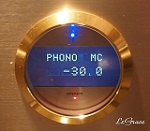
LeGrace- Posts : 389
Join date : 2016-08-07
Location : Ontario, Canada
- Post n°1
 Tube rolling for low freq spectrum
Tube rolling for low freq spectrum
New thread to discuss tubes selection focusing on improving lower frequency results. And especially where the tube units are deployed within a multi-amp setup. Member Dahlberg describes using M125s to strictly handle the region 65-350 hz. Intriguing! I have in turn reconfigured my system around a matching philosophy, in my case 80-400 hz, and so far am quite favorably impressed! Now the question turns to which tubes can give the best results, considering the specialized nature.
Thanks for any and all suggestions!
Thanks for any and all suggestions!
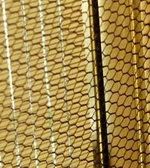
Dahlberg- Posts : 132
Join date : 2016-09-27
Age : 63
Location : Sweden
I have been at work all day so..
You mentioned that you have changed how you use your active
filter, could you please describe how it's set up ?
You mentioned that you have changed how you use your active
filter, could you please describe how it's set up ?

LeGrace- Posts : 389
Join date : 2016-08-07
Location : Ontario, Canada
No active setup, all passive. My subwoofer is having crossover adjustable from 50-160 Hz. Also is having high pass filter connection fixed at 80 Hz. I set crossover same as high pass filter. Then I connect M125 to high pass filter connection on subwoofer. So now my sub is covering 80 Hz and below because of crossover setting, but my M125 only see 80 Hz and above because of high pass filter. Meanwhile my speaker are biamp capable and have crossover settings at 400 at 1500 HZ. Upper drivers terminals covering 400 Hz and above I connect to Marantz PM11S1.
It is definitely better then reverse arrangement where I am having Marantz connected to bass terminals and M125 to high range terminals. Before sub and tower bass drivers both reproduce low freq range versus current setup where duties are separated. Before standing waves must be cancelling as bass is less defined. My speaker also drop quite low in impedance at lower freq, as low as 3 ohm. So M125 can power them better through lower range and the improvement is noticeable.
Today I try 6550 in place of KT88. Not so much difference that I can detect so far.
It is definitely better then reverse arrangement where I am having Marantz connected to bass terminals and M125 to high range terminals. Before sub and tower bass drivers both reproduce low freq range versus current setup where duties are separated. Before standing waves must be cancelling as bass is less defined. My speaker also drop quite low in impedance at lower freq, as low as 3 ohm. So M125 can power them better through lower range and the improvement is noticeable.
Today I try 6550 in place of KT88. Not so much difference that I can detect so far.
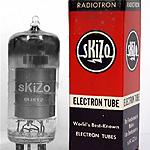
sKiZo- Posts : 1530
Join date : 2013-04-01
Location : Michigan USA
I think you'll find that most any power tube or driver can give you full range, commonly figured as 20-20k hz. It's how they balance the output across the range that makes the difference. Some tubes are naturally brighter, which would tend to overpower the midrange, and some lean more towards both mids, which would tend to overpower the bass. Bass itself can be better defined on some tubes than other, replacing "mud" with crisp, solid impact.
That said, I've had real good results here with my ST120 using a quad of TungSol KT120's, 12BH7 side drivers, and a 6SN7 (with adapter) in the center position. That combination really shakes the room, yet gives me killer vocals and high end crispness. Did a lot of rolling, but haven't felt the need since stumbling across this setup.
That said, I've had real good results here with my ST120 using a quad of TungSol KT120's, 12BH7 side drivers, and a 6SN7 (with adapter) in the center position. That combination really shakes the room, yet gives me killer vocals and high end crispness. Did a lot of rolling, but haven't felt the need since stumbling across this setup.
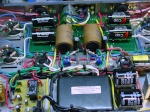
arledgsc- Posts : 503
Join date : 2012-11-30
I agree with SKiZo. The KT120s light up my bass shy speakers like no other KT88 type tube. And I've tried a lot different power tubes.

Dahlberg- Posts : 132
Join date : 2016-09-27
Age : 63
Location : Sweden
I have got some RCA 12au7 "clear tops" in now. Bougth 4 of them and
have tried 2 so far. One is a bit noisy but as far as bass resolution goes
these ones are in the lead so far.
There are not night and day differences but still clearly audible. I did like
the tone of the 5963's a lot though.
I'm only trying these out in the front tube position for now.
have tried 2 so far. One is a bit noisy but as far as bass resolution goes
these ones are in the lead so far.
There are not night and day differences but still clearly audible. I did like
the tone of the 5963's a lot though.
I'm only trying these out in the front tube position for now.

sKiZo- Posts : 1530
Join date : 2013-04-01
Location : Michigan USA
The clear tops are definitely tight on the bottom, but seemed to roll off a bit too much for my tastes. The 5963's were a big improvement here, as they're tight 'n right on the bottom, yet not as bright on the top. The 12BH7's were yet another step up IMHO. In any case, any shortcomings on any of these tubes are nothing that some trick EQ couldn't compensate for.
Which is where it gets interesting. A critical ear for tuning a room is where you get the most bass for the buck. I sing the praises of REW (Room EQ Wizard) for handling that, as it's nigh impossible to get anything better than "close" by ear alone. And we all know, close ain't good enough.
A fairly simple and inexpensive setup as well. If you already have a laptop, all you need is a calibrated mike (Dayton has a nice USB model for around $80) and an SPL meter to calibrate the software will get things going. The software is FREE. Run a few frequency sweeps of the room, add a standard room curve, and save. From there, you can either export the results to a hardware interface (MiniDSP is popular for that) or use software. I have jRiver Media Center that allows me to plug in a filter set from REW using the "convolution kernel" that works right slick.
Analog sources? Never fear ... you can print out the REW results and just pick and choose the big lumps that need to be addressed, based on how many filters your equalizer allows. I use a parametric here that has five tunable filters per channel, and that's enough to really make the room sing once calibrated properly based on REW's recommendations.
Short version ... no tube set is gonna do it all ... but it's a good start!
PS ... ANY equalization is a last step. Room treatments are a must. Once you're close, THEN use REW to determine what's left to be "fixed" and go from there.
Which is where it gets interesting. A critical ear for tuning a room is where you get the most bass for the buck. I sing the praises of REW (Room EQ Wizard) for handling that, as it's nigh impossible to get anything better than "close" by ear alone. And we all know, close ain't good enough.
A fairly simple and inexpensive setup as well. If you already have a laptop, all you need is a calibrated mike (Dayton has a nice USB model for around $80) and an SPL meter to calibrate the software will get things going. The software is FREE. Run a few frequency sweeps of the room, add a standard room curve, and save. From there, you can either export the results to a hardware interface (MiniDSP is popular for that) or use software. I have jRiver Media Center that allows me to plug in a filter set from REW using the "convolution kernel" that works right slick.
Analog sources? Never fear ... you can print out the REW results and just pick and choose the big lumps that need to be addressed, based on how many filters your equalizer allows. I use a parametric here that has five tunable filters per channel, and that's enough to really make the room sing once calibrated properly based on REW's recommendations.
Short version ... no tube set is gonna do it all ... but it's a good start!
PS ... ANY equalization is a last step. Room treatments are a must. Once you're close, THEN use REW to determine what's left to be "fixed" and go from there.
Last edited by sKiZo on Mon Jan 23, 2017 4:04 pm; edited 1 time in total

LeGrace- Posts : 389
Join date : 2016-08-07
Location : Ontario, Canada
Hi Dahlberg, any others that you are planing to try?
How do you arrive at the idea in the first place to apply M125 like this? I am really enjoying how it sounds in my system. But it is not something I would normally think to even try, why I am curious.
I'm excited by the possibility that it can be even better if I upgrade power tube to KT120. Following tax rebate that is...
How do you arrive at the idea in the first place to apply M125 like this? I am really enjoying how it sounds in my system. But it is not something I would normally think to even try, why I am curious.
I'm excited by the possibility that it can be even better if I upgrade power tube to KT120. Following tax rebate that is...

Dahlberg- Posts : 132
Join date : 2016-09-27
Age : 63
Location : Sweden
sKiZo wrote:The clear tops are definitely tight on the bottom, but seemed to roll off a bit too much for my tastes. The 5963's were a big improvement here, as they're tight 'n right on the bottom, yet not as bright on the top. The 12BH7's were yet another step up IMHO. In any case, any shortcomings on any of these tubes are nothing that some trick EQ couldn't compensate for.
Which is where it gets interesting. A critical ear for tuning a room is where you get the most bass for the buck. I sing the praises of REW (Room EQ Wizard) for handling that, as it's nigh impossible to get anything better than "close" by ear alone. And we all know, close ain't good enough.
A fairly simple and inexpensive setup as well. If you already have a laptop, all you need is a calibrated mike (Dayton has a nice USB model for around $80) and an SPL meter to calibrate the software will get things going. The software is FREE. Run a few frequency sweeps of the room, add a standard room curve, and save. From there, you can either export the results to a hardware interface (MiniDSP is popular for that) or use software. I have jRiver Media Center that allows me to plug in a filter set from REW using the "convolution kernel" that works right slick.
Analog sources? Never fear ... you can print out the REW results and just pick and choose the big lumps that need to be addressed, based on how many filters your equalizer allows. I use a parametric here that has five tunable filters per channel, and that's enough to really make the room sing once calibrated properly based on REW's recommendations.
Short version ... no tube set is gonna do it all ... but it's a good start!
PS ... ANY equalization is a last step. Room treatments are a must. Once you're close, THEN use REW to determine what's left to be "fixed" and go from there.
Don't think that i don't appreciate your good intentions but I'm already really well set
for measurements with the "Clio Fw" and I also have a very well functioning dsp
solution from WAf-audio called "Najda" that's ridiculously "hot rodded".
I also have the great fortune of a dedicated room for music that's built for the purpose.
My speakers are 3-way dipoles that do interact very well with the room. I'm using the
dsp for dipole compensation and xo only. No need for any additional compensation.
I'm waiting for the Tungsol 12au7's (new). When they get here I will try them as well
and also do some reruns of all tubes tried so far. The 12bh7 will have to wait for now,
I'm broke

Dahlberg- Posts : 132
Join date : 2016-09-27
Age : 63
Location : Sweden
- Post n°10
 Re: Tube rolling for low freq spectrum
Re: Tube rolling for low freq spectrum
LeGrace wrote:Hi Dahlberg, any others that you are planing to try?
How do you arrive at the idea in the first place to apply M125 like this? I am really enjoying how it sounds in my system. But it is not something I would normally think to even try, why I am curious.
I'm excited by the possibility that it can be even better if I upgrade power tube to KT120. Following tax rebate that is...
I decided to try a tube power amp solution for the midbass section after some consideration of
experiences learned from the use of John Broskies "Unballancer" as a dac buffer instead of the
op amp buffer used earlier, and the surprisingly great dynamics of the "BAT VK60" tried breifly
some years ago. Running the M-125 for 65-350hz seems like total overkill and maybe it is, but
who cares
Up till now I have been running class d amps for this section but they are now sold.
As I understand it you have a triamped setup where only the sub/midbass xo is active and the
second xo is passive. I don't have any experience of your hardware at all so I can be way of here
but have you tried to run the M-125's for everything except the subs ?
Edit: Is the fixed 80hz/hp filter "passive" and do you have any way to adjust phase in the subs ?

LeGrace- Posts : 389
Join date : 2016-08-07
Location : Ontario, Canada
- Post n°11
 Re: Tube rolling for low freq spectrum
Re: Tube rolling for low freq spectrum
As I understand it you have a triamped setup where only the sub/midbass xo is active and the
second xo is passive. I don't have any experience of your hardware at all so I can be way of here
but have you tried to run the M-125's for everything except the subs?
Originally my floor standers are driven by M125's only. SS amp is used as preamp source only. Then I am having separate powered sub. So yes before I am using M125 for everything except sub. But with this arrangement both sub and floor stander act over same freq range as there is no active filtering. So out of phase cancellation is possible. (and likely)
But I am always feeling like some oomph is missing, especially in bass region. Then I read about your concept. So I remove bridging connector from speakers, and biamp them with SS amp and M125's. M125's on low freq driver jacks, SS on higher freq. Also connect M125's to high pass filter connectors on sub. This way M125s should cover similar freq range as you are having with your M125's. I do not have fancy DSP like you but conceptually similar. Bass is so much better now! Tighter, more focused and dynamic. I propose to call it the Dahlberg effect!
Edit: Yes I am able to adjust phase in sub.

Dahlberg- Posts : 132
Join date : 2016-09-27
Age : 63
Location : Sweden
- Post n°12
 Re: Tube rolling for low freq spectrum
Re: Tube rolling for low freq spectrum
LeGrace wrote:As I understand it you have a triamped setup where only the sub/midbass xo is active and the
second xo is passive. I don't have any experience of your hardware at all so I can be way of here
but have you tried to run the M-125's for everything except the subs?
Originally my floor standers are driven by M125's only. SS amp is used as preamp source only. Then I am having separate powered sub. So yes before I am using M125 for everything except sub. But with this arrangement both sub and floor stander act over same freq range as there is no active filtering. So out of phase cancellation is possible. (and likely)
But I am always feeling like some oomph is missing, especially in bass region. Then I read about your concept. So I remove bridging connector from speakers, and biamp them with SS amp and M125's. M125's on low freq driver jacks, SS on higher freq. Also connect M125's to high pass filter connectors on sub. This way M125s should cover similar freq range as you are having with your M125's. I do not have fancy DSP like you but conceptually similar. Bass is so much better now! Tighter, more focused and dynamic. I propose to call it the Dahlberg effect!
Edit: Yes I am able to adjust phase in sub.
So what happens if you keep the active crossover/fixed 80hz for the subs, replace the
bridging connector and skip the biamp solution for your main speakers ? Another tip
would be to adjust phase in a proper way if it's not already done. It's quite easily
done with a sinewave generator and a sound presure meter. I'm of to bed now.

LeGrace- Posts : 389
Join date : 2016-08-07
Location : Ontario, Canada
- Post n°13
 Re: Tube rolling for low freq spectrum
Re: Tube rolling for low freq spectrum
Before I do not understand all the possible ways I can choose to interconnect components.  First time is being all SS, next all tube, now there is SS + tube that can be done 2 ways. I am preferring the mix of tube + SS where tube is focusing on lower freq, more so then reverse way. Biamping this way produce sound that seem bigger and more dynamic then single mode amplification, more to my taste. The overall higher power, additional speaker cables, very good THD and S/N figures of SS amp for high end; I suspect it is multiplicity of smaller things adding up in a way that is more appealing for me personally.
First time is being all SS, next all tube, now there is SS + tube that can be done 2 ways. I am preferring the mix of tube + SS where tube is focusing on lower freq, more so then reverse way. Biamping this way produce sound that seem bigger and more dynamic then single mode amplification, more to my taste. The overall higher power, additional speaker cables, very good THD and S/N figures of SS amp for high end; I suspect it is multiplicity of smaller things adding up in a way that is more appealing for me personally.
Best phase setting is something I always wonder about, so thanks for the suggestions. Unfortunately I do not have these eqpt.
Best phase setting is something I always wonder about, so thanks for the suggestions. Unfortunately I do not have these eqpt.

Dahlberg- Posts : 132
Join date : 2016-09-27
Age : 63
Location : Sweden
- Post n°14
 Re: Tube rolling for low freq spectrum
Re: Tube rolling for low freq spectrum
LeGrace wrote:Before I do not understand all the possible ways I can choose to interconnect components.First time is being all SS, next all tube, now there is SS + tube that can be done 2 ways. I am preferring the mix of tube + SS where tube is focusing on lower freq, more so then reverse way. Biamping this way produce sound that seem bigger and more dynamic then single mode amplification, more to my taste. The overall higher power, additional speaker cables, very good THD and S/N figures of SS amp for high end; I suspect it is multiplicity of smaller things adding up in a way that is more appealing for me personally.
Best phase setting is something I always wonder about, so thanks for the suggestions. Unfortunately I do not have these eqpt.
You have found a combination that you like
What you would need for the adjustment of phase is a 80hz sine wave signal.
And a sound pressure level meter. This is just one of many apps available for your phone (android).
http://www.epanorama.net/newepa/2014/09/08/sound-level-measuring-with-android-phone/
The work order is as follows.
When you are satisfied with the placement of your subs and you belive
(from listening) that the phase is correct you revers the phase 180degres
on your main speakers. Then you play the 80hz tone and adjust phase
untill you measure the lowest possible amplitude. When that is done you
revers the phase of your main speakers back again.
Then you will have the maximum amplitude at the crossover point and the phase is as good as it will be.

LeGrace- Posts : 389
Join date : 2016-08-07
Location : Ontario, Canada
- Post n°15
 Re: Tube rolling for low freq spectrum
Re: Tube rolling for low freq spectrum
Well that seems simple enough, thanks for taking the time to explain!
Just to be certain I went back and tried various connection modes again one right after another so that my acoustic memory of each would be fresh. The exercise demonstrate to me that the main issue all along is more about properly blending in the sub output!
The two configuration I decide I like best are main speakers + no sub + M125's, or biamp with M125 to low drivers and SS to high, but only if also using 80 hz crossover to isolate bass contribution of sub versus main. Otherwise actually sounding worse then simpler configurations. KISS principle in action!
Just to be certain I went back and tried various connection modes again one right after another so that my acoustic memory of each would be fresh. The exercise demonstrate to me that the main issue all along is more about properly blending in the sub output!
The two configuration I decide I like best are main speakers + no sub + M125's, or biamp with M125 to low drivers and SS to high, but only if also using 80 hz crossover to isolate bass contribution of sub versus main. Otherwise actually sounding worse then simpler configurations. KISS principle in action!

Dahlberg- Posts : 132
Join date : 2016-09-27
Age : 63
Location : Sweden
- Post n°16
 Re: Tube rolling for low freq spectrum
Re: Tube rolling for low freq spectrum
About the tube rolling  the Tungsol 12au7 new production sounds promising
the Tungsol 12au7 new production sounds promising 

Dahlberg- Posts : 132
Join date : 2016-09-27
Age : 63
Location : Sweden
- Post n°17
 Re: Tube rolling for low freq spectrum
Re: Tube rolling for low freq spectrum
This is a fun but time consuming part of this project.  The Tung-Sol 12AU7 re-issue tubes
The Tung-Sol 12AU7 re-issue tubes
are great tubes, very low noise and a bass response with lot's of authority.
Rigth now I'm trying them as phase splitters and the RCA 12au7 clear tops are back as
input tubes, it sounds very promissing. For the last level of low frequency resolution I
belive that I'll have to look closer at the coupling capasitors as well.
are great tubes, very low noise and a bass response with lot's of authority.
Rigth now I'm trying them as phase splitters and the RCA 12au7 clear tops are back as
input tubes, it sounds very promissing. For the last level of low frequency resolution I
belive that I'll have to look closer at the coupling capasitors as well.

LeGrace- Posts : 389
Join date : 2016-08-07
Location : Ontario, Canada
- Post n°18
 Re: Tube rolling for low freq spectrum
Re: Tube rolling for low freq spectrum
Good news about Tung-Sol, I would like to try these next.
Meanwhile I must apologize - only Dahlberg is making unique low frequency application of M125's. Turns out my M-125 are actually covering range 80-10,000 hz. The way the speakers are internally wired the posts that I think are for bass driver only are actually connecting to both bass and mid driver. The SS amp is only driving the tweeters. Well it explain why the mid frequencies sound so good!
Meanwhile I must apologize - only Dahlberg is making unique low frequency application of M125's. Turns out my M-125 are actually covering range 80-10,000 hz. The way the speakers are internally wired the posts that I think are for bass driver only are actually connecting to both bass and mid driver. The SS amp is only driving the tweeters. Well it explain why the mid frequencies sound so good!
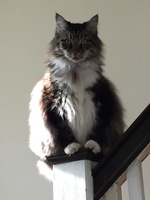
Peter W.- Posts : 1351
Join date : 2016-08-07
Location : Melrose Park, PA
- Post n°19
 Re: Tube rolling for low freq spectrum
Re: Tube rolling for low freq spectrum
Dropping in this late, having noticed that tube for the low end, SS for the high end.
SNIPPAGE
First time is being all SS, next all tube, now there is SS + tube that can be done 2 ways. I am preferring the mix of tube + SS where tube is focusing on lower freq, more so then reverse way.
Apart from which is better - that is a separate discussion that is typically fruitless or ends in anger - tube devices *TEND* to have a lower damping factor, especially at lower frequencies than solid-state devices. For lack of a better term, this may cloud lower frequencies some as the 'dynamic braking' of the woofer will not be as strong. Writing for myself, I would be dubious if any one (good and within spec.) tube is any better than any other (good within spec.) tube. Where I see promise for clearly discernible variation-by-tube is if the solid-state brute-force amp drives the low end and tubes drive the mid/high end. And here, there may be an opportunity for the driver tubes to join in the byplay.
Best phase setting is something I always wonder about, so thanks for the suggestions. Unfortunately I do not have these eqpt. [/quote]
[/quote]
You do have the equipment. You have your ears. Phase distortion and out-of-phase speakers are within your purview. For the first if listening to your system makes you restless over a short period (less than a few hours), likely one possible underlying cause will be phase distortion. No instruments required to find. And connecting speakers "in-phase" covers the rest of it. + to + and - to - on both channels, not symmetrically as I have actually seen all to often. No amount of tube rolling will handle the former, and the latter is independent of tube type. Even more so, phasing and speaker placement can have a lot to do with each other as affected by room acoustics. I suggest that one of the many possible experimentation opportunities to explore would be speaker placement - to the extent that the SO permits. of course. I have found that even a few inches (cm) can make an immediate and audible difference. Possibly for the better, possibly not.
This stuff is lots of fun if you allow yourself to try things, make a few mistakes, and, especially ask a bunch of questions. There are no stupid or silly questions, only stupid or silly answers.
SNIPPAGE
First time is being all SS, next all tube, now there is SS + tube that can be done 2 ways. I am preferring the mix of tube + SS where tube is focusing on lower freq, more so then reverse way.
Apart from which is better - that is a separate discussion that is typically fruitless or ends in anger - tube devices *TEND* to have a lower damping factor, especially at lower frequencies than solid-state devices. For lack of a better term, this may cloud lower frequencies some as the 'dynamic braking' of the woofer will not be as strong. Writing for myself, I would be dubious if any one (good and within spec.) tube is any better than any other (good within spec.) tube. Where I see promise for clearly discernible variation-by-tube is if the solid-state brute-force amp drives the low end and tubes drive the mid/high end. And here, there may be an opportunity for the driver tubes to join in the byplay.
Best phase setting is something I always wonder about, so thanks for the suggestions. Unfortunately I do not have these eqpt.
You do have the equipment. You have your ears. Phase distortion and out-of-phase speakers are within your purview. For the first if listening to your system makes you restless over a short period (less than a few hours), likely one possible underlying cause will be phase distortion. No instruments required to find. And connecting speakers "in-phase" covers the rest of it. + to + and - to - on both channels, not symmetrically as I have actually seen all to often. No amount of tube rolling will handle the former, and the latter is independent of tube type. Even more so, phasing and speaker placement can have a lot to do with each other as affected by room acoustics. I suggest that one of the many possible experimentation opportunities to explore would be speaker placement - to the extent that the SO permits. of course. I have found that even a few inches (cm) can make an immediate and audible difference. Possibly for the better, possibly not.
This stuff is lots of fun if you allow yourself to try things, make a few mistakes, and, especially ask a bunch of questions. There are no stupid or silly questions, only stupid or silly answers.
Last edited by Peter W. on Thu Feb 16, 2017 8:14 am; edited 1 time in total

LeGrace- Posts : 389
Join date : 2016-08-07
Location : Ontario, Canada
- Post n°20
 Re: Tube rolling for low freq spectrum
Re: Tube rolling for low freq spectrum
Peter, thanks for insightful response! I am on board with these statements.
For amplification my system today is SS/Tube/SS. Low bass below 80 hz is by 500w SS x 12" sub. It's high pass filter pass above 80 Hz to M125's which in turn feed a pair of Tannoy D700 towers. These are 3 way design with crossover at 400, 1.5 Khz, and 10Khz. The tweeters are in turn powered by my SS integrated. So M125 cover middle range 80 to 10,000 hz. Your damping comment I appreciate as I notice that since I put the low bass on sub only it has made the bass less muddy overall.
After much experimentation current speaker placement is 1/3 of room dimensions; 8 feet into a 24 foot long room and 4 feet off side walls. My SO emphatically does not approve! I say it for optimal acoustical placement, her response: I don't care about that, it look stupid! So far I am winning but it is costing me a lot of dinners!
For amplification my system today is SS/Tube/SS. Low bass below 80 hz is by 500w SS x 12" sub. It's high pass filter pass above 80 Hz to M125's which in turn feed a pair of Tannoy D700 towers. These are 3 way design with crossover at 400, 1.5 Khz, and 10Khz. The tweeters are in turn powered by my SS integrated. So M125 cover middle range 80 to 10,000 hz. Your damping comment I appreciate as I notice that since I put the low bass on sub only it has made the bass less muddy overall.
After much experimentation current speaker placement is 1/3 of room dimensions; 8 feet into a 24 foot long room and 4 feet off side walls. My SO emphatically does not approve! I say it for optimal acoustical placement, her response: I don't care about that, it look stupid! So far I am winning but it is costing me a lot of dinners!
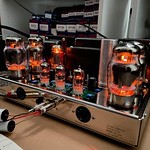
corndog71- Posts : 840
Join date : 2013-03-19
Location : It can get windy here
- Post n°21
 Re: Tube rolling for low freq spectrum
Re: Tube rolling for low freq spectrum
LeGrace wrote:
After much experimentation current speaker placement is 1/3 of room dimensions; 8 feet into a 24 foot long room and 4 feet off side walls. My SO emphatically does not approve! I say it for optimal acoustical placement, her response: I don't care about that, it look stupid! So far I am winning but it is costing me a lot of dinners!
The key is to play her favorite music.
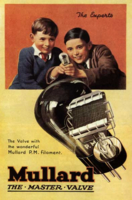
Tube Guy- Posts : 4
Join date : 2017-02-19
- Post n°22
 Re: Tube rolling for low freq spectrum
Re: Tube rolling for low freq spectrum
1/3 of room dimensions seems reasonable even at the expense of not eating LOL.
As for 12AU7's. Personally prefer "high resolution" over "warm" sounding preamp tubes "warm" equals muddled IMHO.
RCA clear tops are a favorite as well as Siemens Silver Plate ECC82.
Don't forget the ears. Normal threshold of hearing a 15Hz sine wave is around 75dB. Compare that to 100 Hz signal where your threshold of hearing is only 30 dB.
I do have a couple of questions. What are the size of your subs? are they down fired? And what is the dB/m and FS?
Thx, Roger
As for 12AU7's. Personally prefer "high resolution" over "warm" sounding preamp tubes "warm" equals muddled IMHO.
RCA clear tops are a favorite as well as Siemens Silver Plate ECC82.
Don't forget the ears. Normal threshold of hearing a 15Hz sine wave is around 75dB. Compare that to 100 Hz signal where your threshold of hearing is only 30 dB.
I do have a couple of questions. What are the size of your subs? are they down fired? And what is the dB/m and FS?
Thx, Roger

LeGrace- Posts : 389
Join date : 2016-08-07
Location : Ontario, Canada
- Post n°23
 Re: Tube rolling for low freq spectrum
Re: Tube rolling for low freq spectrum
Tube rolling time. Started out with 6550's, followed by KT88s, and now KT120's. Changed driver tubes at same time to new production Tung Sol 12au7's. With the KT120's definitely reaching deeper giving the sound overall more substance. Result I was hoping for, liking what I'm hearing!
Hi Tube Guy. Missed your reply. I have one 500w x 12" sub. It is sealed design. Not sure about other questions. Freq range according to data sheet is 19-220 +/- 3 db x 2m. I have crossover set at 80 hz and am also taking advantage of sub's built in 80 hz high pass filter.
Hi Tube Guy. Missed your reply. I have one 500w x 12" sub. It is sealed design. Not sure about other questions. Freq range according to data sheet is 19-220 +/- 3 db x 2m. I have crossover set at 80 hz and am also taking advantage of sub's built in 80 hz high pass filter.
